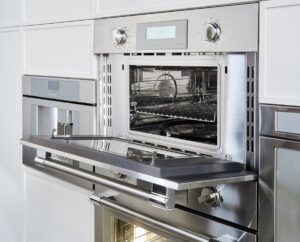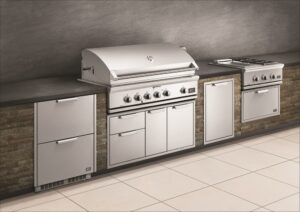2 Tips to Efficiently Organize Your Refrigerator

Many people have opened their refrigerator for a few moments and noticed that some neglected food has spoiled. This could be leftovers from the night before or some healthy leaves that you were planning to eat last week before you forget about them. The contents of your refrigerator can become uncontrollable in short order if you don’t have a system. In this article, we will look at two simple tips to help you organize your refrigerator to improve the efficiency of your cold food storage.
1. Sanitary Considerations
Let’s face it, the main cause for concern for most people will be the chance that they may become ill when they eat food that went bad in the refrigerator. It’s tempting to place the food items that you reach for the most, in areas that are easier to access. But, the primary consideration must be food safety and the most sanitary ways to store food.
There is a real science to chilled food storage that’s beyond the scope of this article. So, to keep things simple let’s look at a typical sanitary setup that you would see in a professional kitchen where good food hygiene is practiced. We can broadly divide food storage in the refrigerator into the upper and lower shelves as follows:
- The Upper Shelves: This is the ideal location for cooked foods that are safe to eat right now, including leftovers, cold cuts, and chilled drinks.
- The Lower Shelves: Here you will store any raw foods, such as chicken, ground beef, and other meats.
This distinction between upper and lower shelves to keep raw and cooked foods separate is essential. If cross contamination occurs, it can lead to serious bouts of illness that lead to dehydration, diarrhea, vomiting, and more. This can happen if raw foods on an upper shelf drip onto cooked foods and foods that don’t require cooking underneath.
2. Increasing the Longevity of Stored Foods
Many people are surprised to learn that their refrigerator doesn’t have a consistent internal temperature. There are warmer and cooler zones and some locations are better for specific food item storage than others. Understanding this principle is important if you want to extend the freshness and longevity of your food. Let’s take a tour around your refrigerator and explain what food items should go where:
- The Door: This is the warmest area which makes it a poor location for the storage of raw meat and eggs. But, it’s a great spot for butter, soft cheeses, and condiments.
- The Vegetable Drawer: As the name suggests this is a good location for veggies if the air is slightly more humid. This is why you need to keep these foods in a loose plastic bag.
- The Crisper: This is the ideal location for fruits and leafy vegetables because the air is drier.
- The Top Shelf: This is where you should store your leftovers, chilled drinks and any other food items that don’t require cooking.
- The Middle Shelf: This is the most consistent temperature in the entire refrigerator which makes it a great spot for the storage of eggs.
- The Bottom Shelf: This is the coldest area where you should store dairy products, deli meat, and raw meat. These should be kept in separate containers to reduce the risk of cross contamination.
In Conclusion
These two tips will help you to store your chilled foods more efficiently. To take your organization to the next level use masking tape and a sharpie to create food labels. Move older foods to the front and you won’t forget about them. If you line the shelves with plastic wrap or waterproof placements it’s easier to clean up spills. Finally, you can create your own mini shelving system using stackable plastic or glass containers.
If you are thinking about a new refrigerator, you can explore the options with our online collection or speak with a home appliance expert for a specialized service.
- The Ultimate Guide to Outdoor Beer Dispensers: Elevate Your Backyard Entertaining in 2025
- Choosing the Perfect Bathtub: Freestanding vs. Built-In Styles for a Luxury Bathroom
- Do You Really Need a Second Oven? When a Double Oven Makes Sense
- How to Choose the Right Faucet Finish for Your Kitchen or Bathroom
- Designing the Ultimate Outdoor Kitchen: Hestan, Lynx, and DCS Essentials for 2025
- Should You Feature Graff, Dornbracht, or Axor? 2025 Faucet & Sink Trends in Luxury Design
- Dishwasher Buying Guide 2025: Quiet, Clean, and Panel-Ready Options Explained
- Luxury Range Buying Guide 2025: How to Choose the Perfect Pro-Style Range
- How to Match Appliances with Your Kitchen Cabinet Style
- Luxury Kitchen Appliance Packages: Are They Worth It For Beverly Hills Homeowners?






